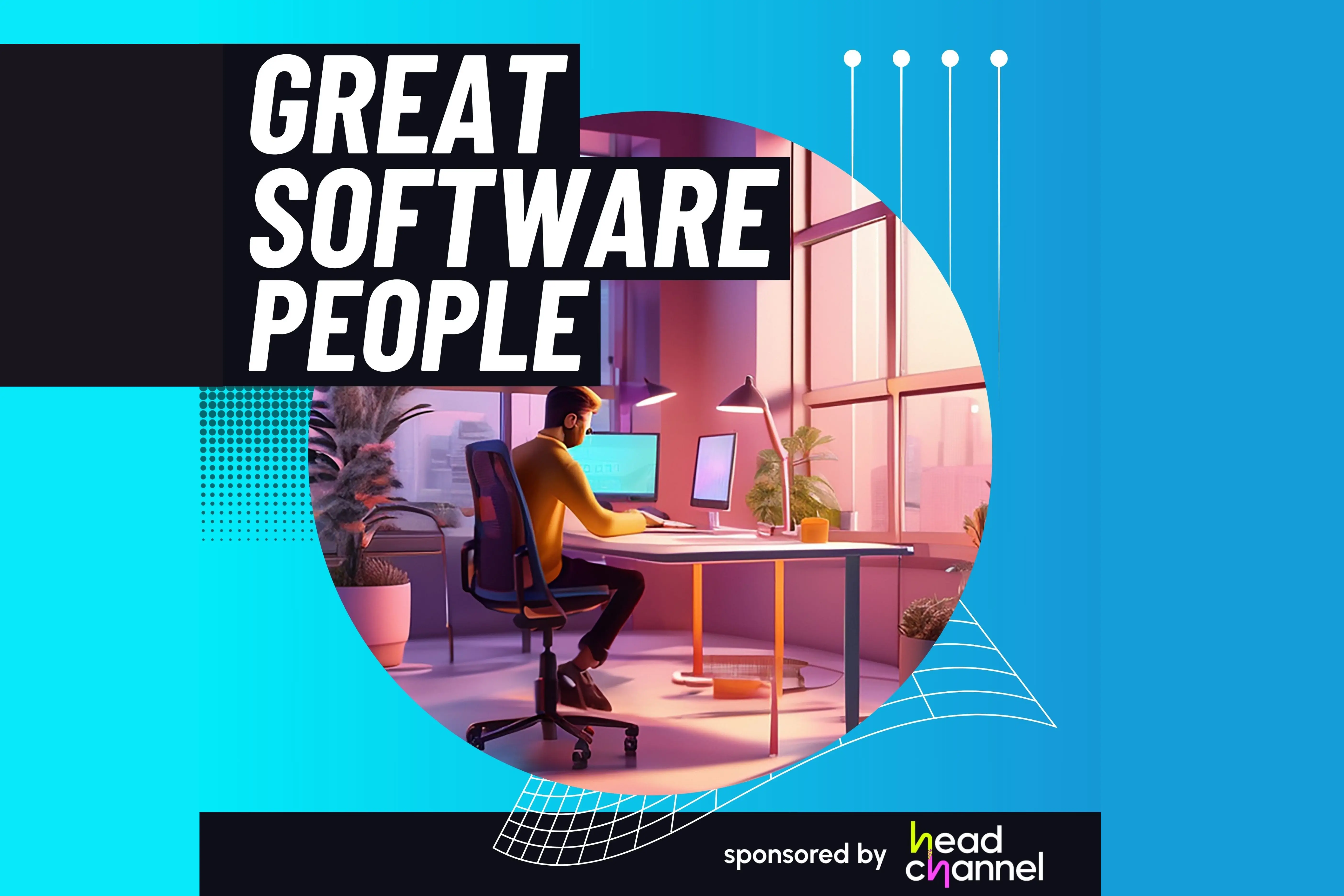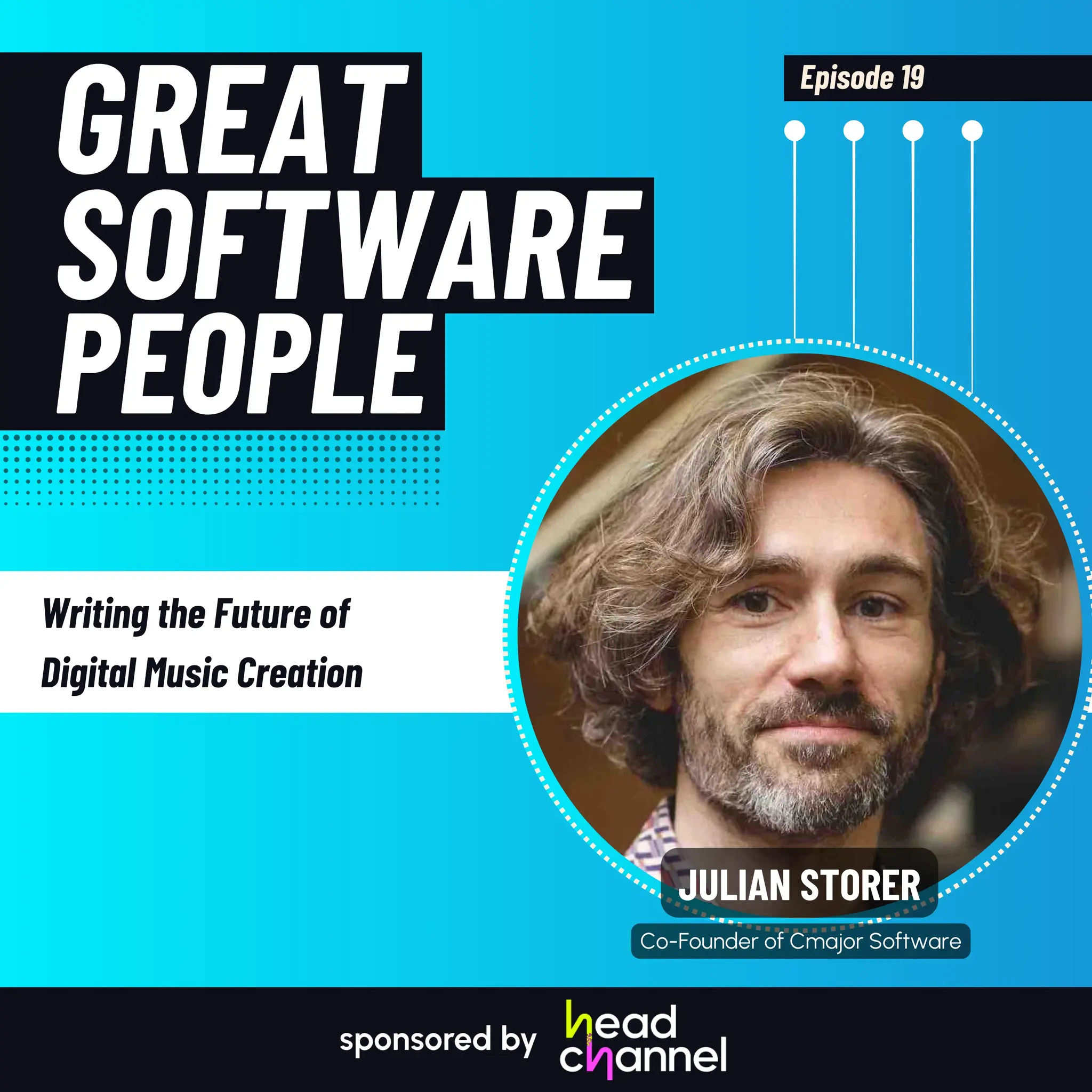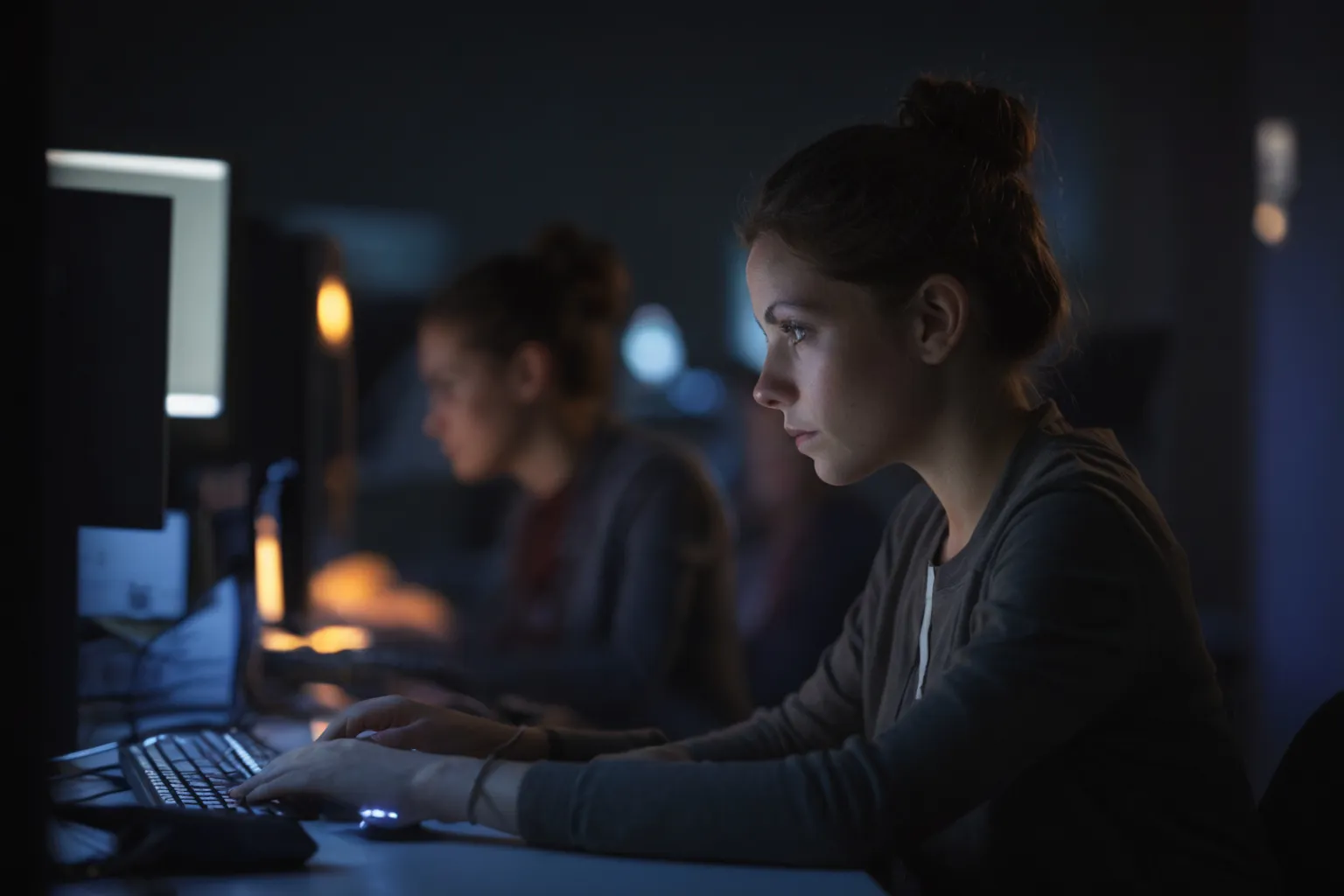
Writing the Future of Digital Music Creation with Cmajor Software Co-Founder, Julian Storer - E19
Almost every piece of music made today is done so with Julian Storer’s digital fingerprints embedded in it, such is the reach of his work.
From writing a groundbreaking DAW to creating the future of DSP libraries, his journey in software is utterly unique, and places him perfectly to see the AI-enabled future of creative industries.
Join us on Great Software People to learn more about the hidden side behind your favourite music, and whether AI threatens to turn it on its head…
This episode covers:
-
Building JUCE, a library so widely used in music software today
-
The challenges that faced cross-platform developers
-
How Julian built a DAW company, sold it, and got it back again
-
The role of generative AI in music, and whether it’s here to stay

Episode highlights
“A big chunk of my career was building a library called JUCE that’s really widely used by pretty much everyone nowadays who does audio plugins.” - 2:20 - Julian Storer
“All of our devices have audio DSPs that nobody can run code on. It seemed obvious to me what had to happen.There had to be some platform for writing DSP code to be run anywhere - that’s been my passion, and is now the language Cmajor.” - 13:30 - Julian Storer
“The generative side of AI in music is a nice party trick, but it’s taking away from what people really want from music - to make it themselves. Automating boring stuff that people need to do seems like a worthwhile use case.” - 22:30 - Julian Storer
“Humans are still making the music, you’re still editing your music, but AI might make it easier to interact with it. So you can say to it, ‘Hey, turn down track three’, or ‘Make the guitars louder’, for tasks that take a lot of clicking on timelines at the moment.” - 26:10 - Julian Storer
LISTEN HERE:
[00:00:13]
Rich: Welcome to another episode of Great Software People! Today, I’m thrilled to have Julian Storer, a software developer working in the audio industry. Julian, that introduction barely scratches the surface—can you expand on it?
Julian: Thanks, Rich. Yeah, I’ve been in the audio industry for about 30 years now. But I’m at the geek end of the spectrum—I don’t really make audio algorithms anymore. I build the software that developers in the audio industry use to create things. I like to think of myself as building the tools that make the tools.
[00:01:18]
Rich: So, let’s go back to the beginning. When you were 12 years old, did you imagine yourself in this career?
Julian: I was definitely a Vic 20 kid. I got mine in the 1980s, and I was hooked on programming from there. But I also fell in love with music a little later in life. Like many people in this industry, I’m a failed musician—I started playing guitar at 16 or 17, way too late to be great. So, I figured out a way to combine my love of music with a career that would actually make money.
[00:02:08]
Rich: What kinds of things were you programming on the Vic 20?
Julian: I thought I’d be a game developer initially. But a lot of what I ended up doing was graphics—sprites, basic rendering. That stayed with me, as even in my audio career, I’ve done a lot of work on graphical user interfaces and 2D rendering.
[00:03:28]
Rich: You studied computer science and psychology at St. Andrews. How did that come about?
Julian: Scottish universities let you pick up extra subjects along the way, so I added psychology. I found it fascinating and still think a lot about how people interact with the software we build.
[00:03:59]
Rich: What was your first job after university?
Julian: My first job was a boring database role that I hated. But then I moved to London and joined Lightworks, a company building one of the first video editing systems. This was the mid-90s, and we were working on cutting-edge tools for editing film.
[00:05:00]
Rich: What kind of technology were you working on at Lightworks?
Julian: We built video editors that required massive custom hardware—giant DSP cards, brick-sized hard drives that could store maybe nine gigabytes. It sounds absurd today, but back then, this was groundbreaking. The job got me into media software and gave me my first taste of building tools for creative professionals.
[00:06:10]
Rich: What happened after Lightworks?
Julian: Lightworks went bust in the late 90s, and I moved into the audio world. I started a small company making sound effects software for post-production and then decided to build my own digital audio workstation (DAW).
[00:06:54]
Rich: What inspired you to create your own DAW?
Julian: I wanted to record myself playing guitar on my PC. I tried early versions of Cubase, but they were clunky and barely worked. So I thought, “How hard could it be to build a DAW?” I started building it in my spare time, and by 1999 or 2000, I had something functional.
[00:08:03]
Julian: As I built the DAW, I realised I also needed a library for things like UI, file handling, and threading. That library became Juice (Jules’ Utility Class Extensions), which ended up being the foundation for much of my career.
[00:08:54]
Rich: How did Juice become a business?
Julian: Mackie, a big audio company, wanted to acquire my DAW, Traction. Because I’d separated the library and the app, I sold them the DAW but kept the library. Then I started licensing Juice to other developers who needed the same tools.
[00:10:14]
Rich: How does the licensing work?
Julian: Juice has always been dual-licensed: open source under the GPL for hobbyists and a commercial license for closed-source projects. This model worked well and is still in place today.
[00:11:41]
Rich: You mentioned that Juice was acquired by Roli in 2014. What happened there?
Julian: Roli bought Juice, and I worked with them for several years before leaving in 2020. By that point, I was deep into building compilers, which became my next passion project.
[00:12:03]
Rich: Compilers? That’s a bit of a leap.
Julian: Yeah, I started looking at OpenGL shaders and thought, “Why don’t we have something like this for audio?” There’s no universal way to write DSP code that can run on multiple platforms—CPUs, DSPs, GPUs. That’s how Cmajor was born.
[00:14:31]
Rich: So, what’s the vision for Cmajor?
Julian: It’s a language and platform for real-time DSP code. The idea is to let developers write DSP algorithms that can run anywhere—on your phone, in your headphones, or even on a Chromecast. It’s about creating a flexible, secure way to handle audio processing at scale.
[00:18:00]
Rich: Let’s circle back to Traction. You mentioned you got it back from Mackie. How did that happen?
Julian: Mackie stopped developing it, so we negotiated to take it back. Since then, we’ve expanded Traction’s product lineup to include plugins and hardware. It’s been great to see it evolve.
[00:24:00]
Rich: Let’s talk AI. What role do you see it playing in audio?
Julian: I’m skeptical about generative AI for music. Music is deeply human—people connect with the story and creativity behind it. AI might excel at automating boring tasks like cleaning up audio or emulating amps, but replacing human creativity doesn’t sit well with me.
[00:27:12]
Rich: What’s next for you?
Julian: My main focus is on making Cmajor the standard for audio development. Beyond that, who knows? I might have reached peak geek with compilers, but I’ll keep looking for the next challenge.
[00:29:00]
Rich: Julian, thank you so much for joining us on Great Software People. This has been an incredible conversation.
Julian: Thanks for having me, Rich—it’s been a pleasure.

Contact us.
If you need a partner in software development, we're here to help you.
We will respond to your enquiry immediately.